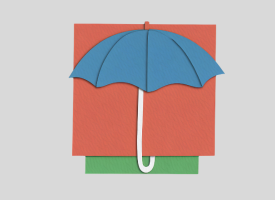Transcript - Dr Michael Gannon - 6PR - Private Health Insurance
Transcript: AMA President Dr Michael Gannon, 6PR, 30 March 2017
Subjects: Private Health Insurance
GARETH PARKER: Alright Graham, it's a reasonable question. It's one I'll put to my next guest, Michael Gannon. He is the AMA National President. Dr Gannon, good morning to you.
MICHAEL GANNON: Good morning, Gareth, how are you?
GARETH PARKER: I'm good. Dwayne from Bupa says – Dwayne Crombie, sorry, from Bupa – says that a small but significant minority of doctors are charging too much, and this is one of the things that’s driving up peoples' health insurance premiums. Is he right?
MICHAEL GANNON: Well, he's half right. There is a very small number of doctors that I would have to say charge egregious amounts. Some of them are much-loved and valued celebrities. There's no one who is worth $40,000 for an afternoon's work in the operating theatre, and yet society lauds people like that.
The true numbers are that 86 per cent of operations in Australia are provided at no-gap level – that means zero dollars. That means that the doctor accepts what the insurer has decided is a fair fee. Now, that fee might not have any scientific or market basis behind it, but that's what we'll do.
Another 7 per cent are billed under known-gap arrangements. These are more common with the eastern States' health funds. A doctor has the right, under those funds, to charge a gap of up to $400 or $500 with proper informed financial consent, and then the insurer will pay the rest. That's another 7 per cent.
So what we're talking about is 7 per cent of fees. There are some who charge a lot more than that. But what the head of the for-profit insurers is saying is that they don't like the fact that they get a lot of customer complaints that their products simply don't cover the true costs of providing private health care.
GARETH PARKER: When you talk about the true costs of providing health care though, who decides what the true cost is? Who decides what's a reasonable level of remuneration and profit for medical professionals? We know they spend a lot of time training, as they should, and we know that it's a very difficult job. Some specialties are more difficult than others, some require higher levels of training than others, but most doctors spend an awful lot of time acquiring their expertise and we're thankful for that. However, what is a reasonable level of remuneration? Who decides?
MICHAEL GANNON: Well, one not unreasonable metric – and you might not be surprised that I'll defend the AMA list of fees – but that's our list of fees. Now, the truth is that the AMA fee is actually - most specialists regard it as a high-water mark. It's actually significantly more than what the majority of doctors would charge.
But internally, we have a mechanism where we look at the costs each year so that the simple costs, things that other small businesses – and that's all a specialist doctor is, is a small business, he or she – they each year have a rise in costs, whether that's power, utility, wages for our staff. I employ four staff in my rooms, they like a pay rise every year.
There are other costs that are relatively unique to our form of small business. Professional indemnity insurance might be as little as $10,000 a year; three years ago I paid $130,000 a year for professional indemnity insurance. There's the costs of technology. Ophthalmologists sometimes buy a laser that might cost half a million dollars. So the cost of specialist medical practice goes up year on year on year.
GARETH PARKER: But does that quality of care go up commensurately, Michael Gannon?
MICHAEL GANNON: Well, I think it does if you look at any accepted measure of life expectancy, mortality from surgery. So if you want to look at big picture metrics, if you want to look at our universal healthcare system that relies on GPs, on public medicine, private medicine, Australia's life expectancy is right at the top of the world. Australian women live longer than anywhere else in the world except Japanese women; Australian men, it's about fifth highest in the world.
If you look at individual measures, like cancer survival, post-operative mortality rates, we perform extremely well. And the truth is that Australian doctors significantly discount their services for patients – that's much more the story day by day.
GARETH PARKER: Discount them?
MICHAEL GANNON: Absolutely. If you look at the AMA list of fees, which has gone up with inflation …
GARETH PARKER: [Interrupts] Which is a relatively controversial document in and of itself, Michael. I don't need to tell you that.
MICHAEL GANNON: Well, the truth is that the costs of many other forms of business have gone up a lot over the past 25 years. What we've seen is the Government has frozen patient rebates. [We have] the for-profit insurers, and that's the real change in the last 10 years, Gareth. If you go back 10 years ago, the Australian private health industry was absolutely dominated by mutuals, but now it's all for-profit.
GARETH PARKER: Alright, well thanks for your time this morning, Dr Gannon.
MICHAEL GANNON: Alright Gareth, pleasure.
GARETH PARKER: That's Michael Gannon.
30 March 2017
CONTACT: John Flannery 02 6270 5477 / 0419 494 761
Maria Hawthorne 02 6270 5478 / 0427 209 753
Follow the AMA Media on Twitter: http://twitter.com/ama_media
Follow the AMA President on Twitter: http://twitter.com/amapresident
Follow Australian Medicine on Twitter: https://twitter.com/amaausmed
Like the AMA on Facebook https://www.facebook.com/AustralianMedicalAssociation



